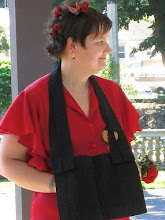Simple focus on the breath in the body is one of the many methods of developing Dharana, or concentration. Since the breath is always with us it is a very helpful tool to settle the mind and establish a single point of focus. This helps us to cultivate a deep meditation practice, Dhyana, and move towards experiences of the boundless mind of Samadhi.
For practicing Dharana and Dhyana the body should be settled in a comfortable position. Although this can be done seated, standing, lying down (e.g., during Savasana), or through a practice of walking mediation, this example will focus on the seated posture. Since the object is to settle the mind into silence, as written by the sage Patanjali in the second of the Yoga Sutras, it is best to first settle the body comfortably so the mind's attention is not constantly focused on some point of discomfort in the body. A timer may be helpful so your mind does not have to devote any attention to how much time may or may have not passed and the bell is useful as signal that your practice is finished.
Begin in Sukhasana. If it is uncomfortable to sit on the floor a chair can be used. The arms can be releasing down with the hands either resting upon the thigh to knee area of each leg, in Jnana Mudra, or in the lap in Samadhi/Dhyana Mudra. The eyes can either close or the gaze softens and falls to the area about a foot in front of the feet (at a 45 degree angle).
Start breathing in and out through the nose. Draw in deeper breaths at first. Feeling the belly draw out so air can be drawn down to the bottom lobes of the lungs. As the breath moves through the mid-lungs, let the mind's awareness rest upon the expansion in the side ribs. At the top of a deep, full breath watch the expansion that happens as the top of the lungs fill with air. the collar-bones move away slightly and there is space created by the lifting of the breastbone and the expansion of the shoulder-blades.
Just as completely as the lungs are filled, empty them just as completely and deliberately. Moving the breath and the mind's focus through the top of the lungs, the middle section, and ending when the belly draws in somewhat to empty the lungs. Breathing in and out deeply for several of these big, three-part breaths. Letting the mind settle on the sensation of the body being breathed from top to bottom, side to side, and front to back.
Now return to a gentle, easy breath; in and out through the nose. Let the mind settle to one aspect of the breath. Draw attention to the coolness of the in breath as it moves over the area above the lips and into the nasal passages. On the exhalation this same breath you can notice the way the body has warmed the breath at the tip of the nose and above the lips. Watch the sensation of the diaphragm and muscles of the ribs moving, contracting, softening with each inhalation and exhalation. The mind may also try settling in the way the belly moves with each breath. Just find one sensation of breath that you can focus the attention on.
If the mind wanders, do not get caught up in judging it. Merely notice, "Oh, there I am thinking about something.", and return back to the sensation of the breath in the body. It doesn't matter if you keep having to return the mind to this focus, just notice when it is not there and bring it back. Each breath is an opportunity to return to concentrating on the sensation.
Should the mind desperately need some more precise activity let it settle into labeling each breath. "This is me drawing in a breath. This is me exhaling."
The Vietnamese Zen Master, Thich Nhat Hahn, offers several lovely suggestions for labeling the breath during breathing meditation including, "Inhaling, I notice I am alive. Exhaling, I smile at my life."
Subscribe to:
Post Comments (Atom)





No comments:
Post a Comment